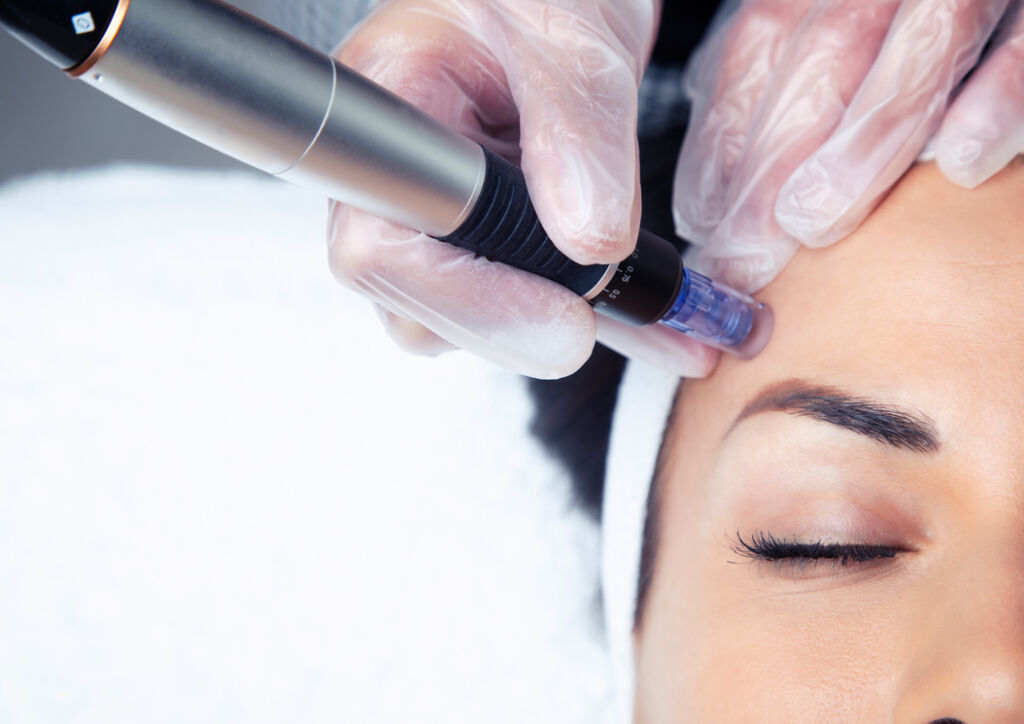As micro-needling becomes more popular, we learn more about its benefits and drawbacks. Today, I want to bring you up to date on the research. For anyone unfamiliar with this technique, micro-needling is a minimally invasive procedure that uses fine needles to puncture the top layers of skin. The micro wounds induce collagen production while the epidermis remains relatively intact, meaning no noticeable effects (bruising, peeling or redness) Micro-needling has become widely used in dermatology as its popularity skyrocketed.
The modern use of micro-needling can be traced to 1995 by Dr. Desmond Fernandes in Philadelphia to treat wrinkles and scars with hypodermic needles. Around the same time, he developed a small needle stamp to induce collagen production. Collagen production helps skin rejuvenation.
Today, micro-needling is indicated for a range of skin conditions, including; acne scars, acne, post-traumatic/burn scars, alopecia, skin rejuvenation, drug delivery, hyperhidrosis, stretch marks, and much more. Moreover, during the last 10 years, many new innovations have been made to the initial instrument used for micro-needling.
The more techniques are used, the more we learn about the most effective methods. Here are some of the latest findings:
- DARK SKIN TYPES It is a very safe technique for dark skin types, where risk of post inflammatory pigmentation is very high when other techniques damage the epidermis. , (Indian Dermatology Online Journal)
- OTHER SURGICAL TECHNIQUES Micro-needling is now being used in conjunction with other surgical techniques to provide better results. (Indian Dermatology Online Journal)
- SERUM INFUSION “Micro-needling …has very little downtime but visible results,” says Yale Medicine plastic surgeon Tito Vasquez, MD. “By creating tiny channels through the skin, allowing us to infuse serums and active ingredients more efficiently, this treatment will stimulate collagen production and improve skin texture and tone.” (Yale Medicine)
- ACNE SCARS Micro-needling is used often to treat acne scars but has been found to be less effective on deep, narrow “icepick” acne scars than on broader ones.
- PIGMENTATION PROBLEMS Micro-needling does not deliver heat to the skin like lasers do. As a result, people with dark patches of skin and hyperpigmentation don’t have to worry about worsening pigmentation problems. Darker skin is susceptible to pigmentation changes as a post-inflammatory response.
- SKIN DEPRESSIONS Micro-needling is used to treat depressions in the skin such as surgical scars, other scars, burns, enlarged pores, wrinkles, and stretch marks.
- ALOPECIA A review of 22 studies generally favorable results for micro-needling as an adjunct therapy for androgenic alopecia and alopecia areata in men and women. Caution: data are of relatively low quality. Dermatology and Therapy, v 12, pp 41- 60.
So, what do we know? Micro-needling is still in its infancy, but is being used increasingly as a non-invasive technique, not only for wrinkles and tightening skin, but for scarring, alopecia, burns, enlarged pores, and serum infusion.
“The way our skin looks is a big part of how people perceive us,” says Dr. Suozzi from Yale Medicine Dermatology. “Patients have high satisfaction when they can improve the appearance of their skin and eliminate signs of aging.”


